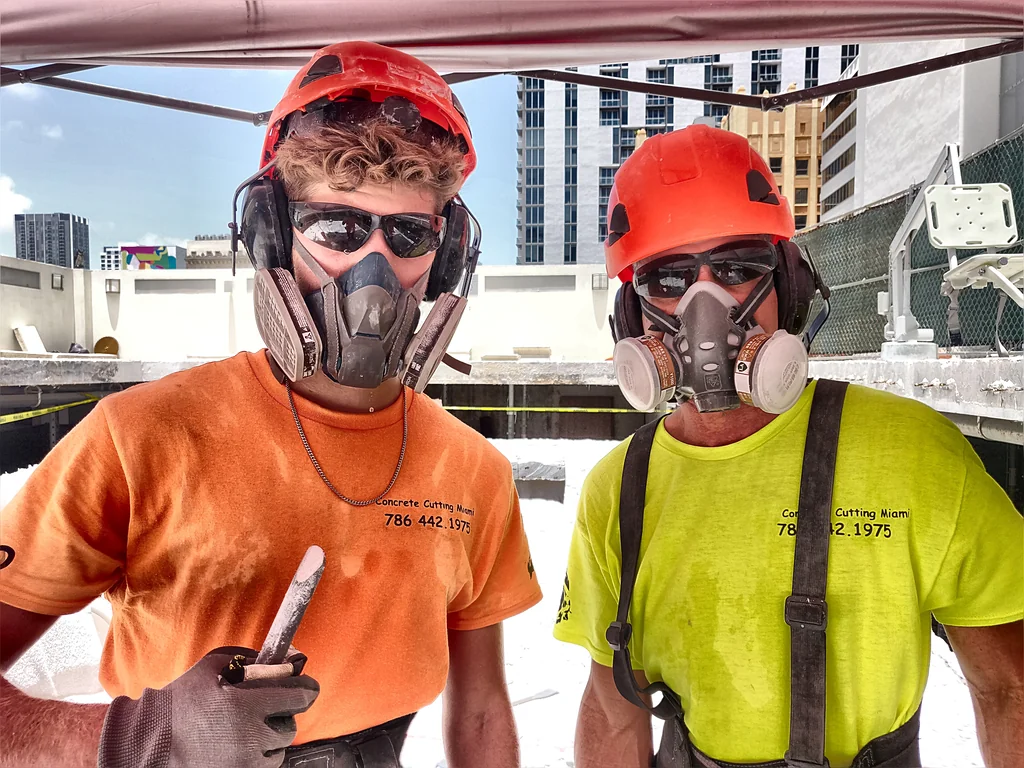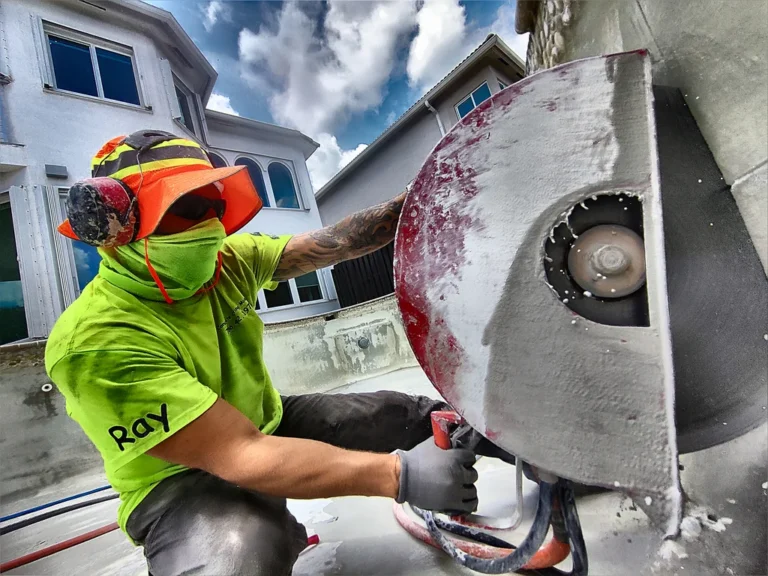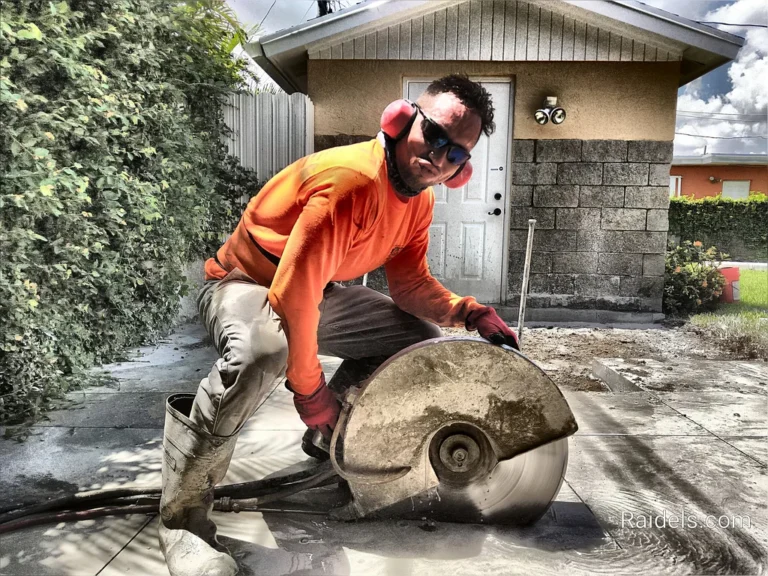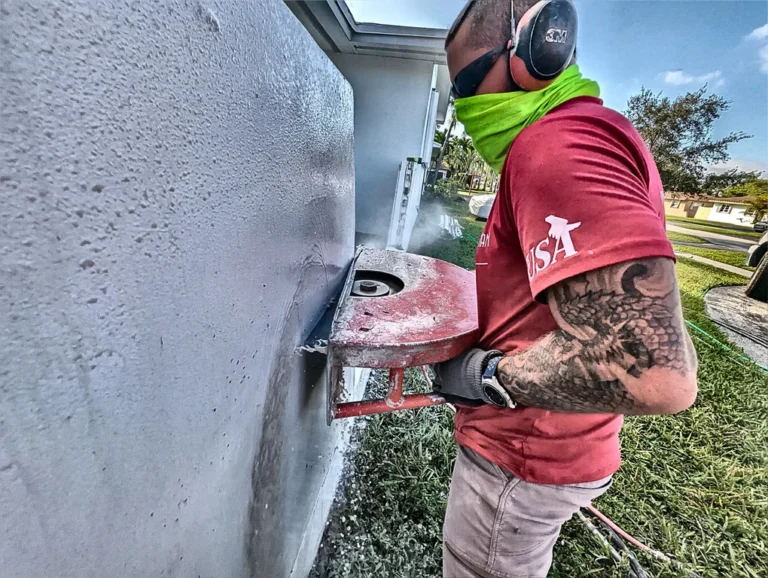After 20 years in the concrete cutting and demolition business, I’ve seen incredible advancements in tools and techniques. We can cut faster, deeper, and more precisely than ever before. But alongside this progress, one fundamental truth remains constant: the work generates hazards. And arguably, one of the most insidious dangers we face isn’t the spinning blade or the falling debris, but something nearly invisible – respirable crystalline silica dust. Overlooking concrete cutting safety, particularly concerning silica, isn’t just negligent; it’s downright dangerous.
For anyone involved in concrete work in Miami, from contractors and operators to homeowners commissioning projects, understanding and controlling silica dust isn’t just about compliance; it’s about protecting long-term health. Let’s delve into why this hazard demands our utmost respect and how responsible professionals manage it.
The Unseen Enemy: What is Silica Dust?
Crystalline silica is a basic component of soil, sand, granite, and many other minerals. Quartz is the most common form.1 It’s found naturally in the materials that make up concrete, brick, stone, and mortar. When these materials are cut, drilled, ground, chipped, or crushed, tiny particles – many times smaller than a grain of sand – are released into the air. These microscopic particles are known as respirable crystalline silica.
The danger lies in their size. Because they are so small, they can be inhaled deeply into the lungs, bypassing the body’s natural defenses. Is concrete dust harmful? Absolutely.
Health Risks: More Than Just Dust
Prolonged or high-level exposure to respirable crystalline silica can lead to severe, sometimes fatal, health conditions:
- Silicosis: An incurable and progressive lung disease caused by the buildup of scar tissue in the lungs, reducing their ability to take in oxygen. There are different forms (chronic, accelerated, acute), all serious.
- Lung Cancer: The International Agency for Research on Cancer (IARC) classifies inhaled crystalline silica as a human carcinogen.
- Other Lung Diseases: Increased risk of tuberculosis, Chronic Obstructive Pulmonary Disease (COPD), and other respiratory ailments.
- Kidney Disease: Studies have linked silica exposure to kidney problems.
The hidden dangers of cutting concrete walls and other concrete modification tasks are real and life-altering if proper precautions aren’t taken.
High-Risk Activities in Concrete Work
Virtually any process that disturbs concrete can generate hazardous dust:
- Saw Cutting: Using walk-behind slab saws, wall saws, or hand-held cut-off saws.
- Core Drilling: Creating holes for utilities or anchors.
- Grinding/Polishing: Preparing surfaces or achieving specific finishes.
- Chipping/Scabbling: Using chipping hammers or bush hammers for removal or texturing.
- Jackhammering/Breaking: Demolishing structures or slabs (concrete breaking).
- Crushing/Transporting: Handling demolished concrete debris.
Even seemingly small tasks can generate significant exposure levels if uncontrolled.
Controlling the Hazard: OSHA Standards and Best Practices
Recognizing the severity of the risks, the Occupational Safety and Health Administration (OSHA) has specific standards for silica dust exposure (29 CFR 1926.1153 for construction). While the specific legal requirements apply to employers, the principles behind them represent best practices for anyone involved. Key elements include:
- Permissible Exposure Limit (PEL): OSHA sets a strict limit on the amount of respirable crystalline silica workers can be exposed to over an 8-hour workday.
- Exposure Control Plan: Employers must develop a written plan outlining tasks involving silica exposure and the methods used to protect workers.
- Engineering Controls & Work Practices: The primary focus is on controlling the dust at the source.
- Respiratory Protection: Required when engineering controls cannot keep exposure below the PEL.
- Housekeeping: Specific methods to clean up dust without making it airborne again (e.g., no dry sweeping).
- Medical Surveillance: Required for workers exposed above certain levels for extended periods.
- Training: Workers must be trained on silica hazards and the control measures in place.

Mastering Dust Control: Methods That Work
Effective concrete cutting safety hinges on minimizing dust generation and capture.
1. Wet Methods: The First Line of Defense
Applying water at the point of generation is often the most effective engineering control.
- How it Works: Water suppresses dust formation, turning potentially airborne particles into a manageable slurry. It also cools the blade or bit, improving tool life. Explore the debate: is it better to cut concrete wet or dry? For dust control, wet is almost always preferred.
- Application: Saws and drills often have integrated water delivery systems aimed directly at the cutting edge. Consistent and adequate water flow is crucial.
- Benefits: Highly effective at reducing airborne dust levels, often below the OSHA PEL when implemented correctly. The benefits of wet cutting concrete are significant for health and tool performance.
- Considerations: Requires a water source and managing the resulting slurry, which must be contained and disposed of properly according to local Miami environmental regulations.
2. Vacuum Dust Collection Systems
When wet methods are infeasible or insufficient, dust collection systems are used.
- How it Works: A shroud around the blade or bit connects via hose to a high-efficiency vacuum cleaner.
- HEPA Filtration: The vacuum must be equipped with a High-Efficiency Particulate Air (HEPA) filter capable of capturing microscopic silica particles. Standard shop vacuums are inadequate and can actually worsen exposure by exhausting fine particles back into the air.
- Application: Used with grinders, some saws, and chipping tools. Tool manufacturers offer integrated shroud/vacuum systems.
- Benefits: Effective at capturing dust at the source, suitable for indoor work or where water use is restricted. Helps in minimizing dust and debris during a residential concrete demolition.
- Considerations: Requires proper filter maintenance (cleaning or replacement) and ensuring hoses/connections are secure.
3. Respiratory Protection: The Necessary Backup
When engineering controls can’t guarantee exposure below the PEL, respirators are required.
- Types: Range from disposable N95 filtering facepieces (limited use) to half-mask or full-facepiece elastomeric respirators with appropriate particulate filters (P100), up to Powered Air-Purifying Respirators (PAPRs) for higher exposure levels.
- Fit Testing: Essential for tight-fitting respirators (half/full-face) to ensure a proper seal. Required annually by OSHA.
- Medical Evaluation: Workers required to wear respirators often need medical clearance.
- Important Note: Respirators are the last line of defense, used in conjunction with engineering controls, not as a replacement for them.
Miami-Specific Considerations
Working in Miami’s environment doesn’t lessen the risks:
- Outdoor Work: Don’t assume open air eliminates the hazard. Concentrated dust clouds can still form around the operator, especially with dry methods or inadequate wet controls. Wind can also carry dust unexpectedly.
- Humidity: While high humidity might seem helpful, it doesn’t negate the need for active dust suppression like wet cutting or HEPA vacuums.
- Confined Spaces: Interior renovations or work in utility vaults require stringent controls, often favoring HEPA vacuums or hydraulic tools to avoid exhaust fumes alongside dust.
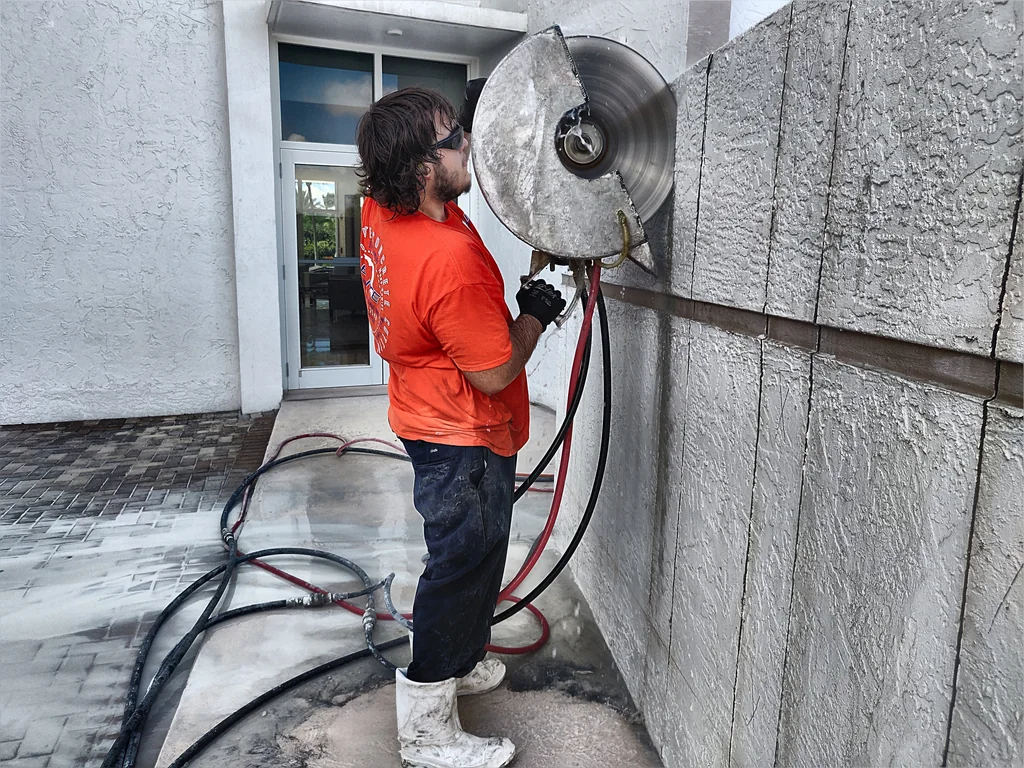
The Professional Responsibility
Cutting concrete is skilled work, but doing it safely is a hallmark of professionalism. Reputable contractors in Miami understand the safety measures in concrete cutting aren’t optional add-ons; they are integral to the job. They invest in:
- Proper Equipment: Tools with integrated water feeds or dust collection shrouds.
- HEPA Vacuums: Industrial-grade vacuums designed for silica dust.
- Training: Ensuring operators understand the risks and control measures.
- PPE: Providing and enforcing the use of appropriate respirators and other protective gear.
- Compliance: Adhering to OSHA standards and local regulations.
When choosing a contractor, always inquire about their specific safety protocols, particularly regarding silica dust control. It speaks volumes about their commitment to the well-being of their workers and clients. Protecting lungs and ensuring a safe worksite is just as crucial as achieving the perfect cut.
